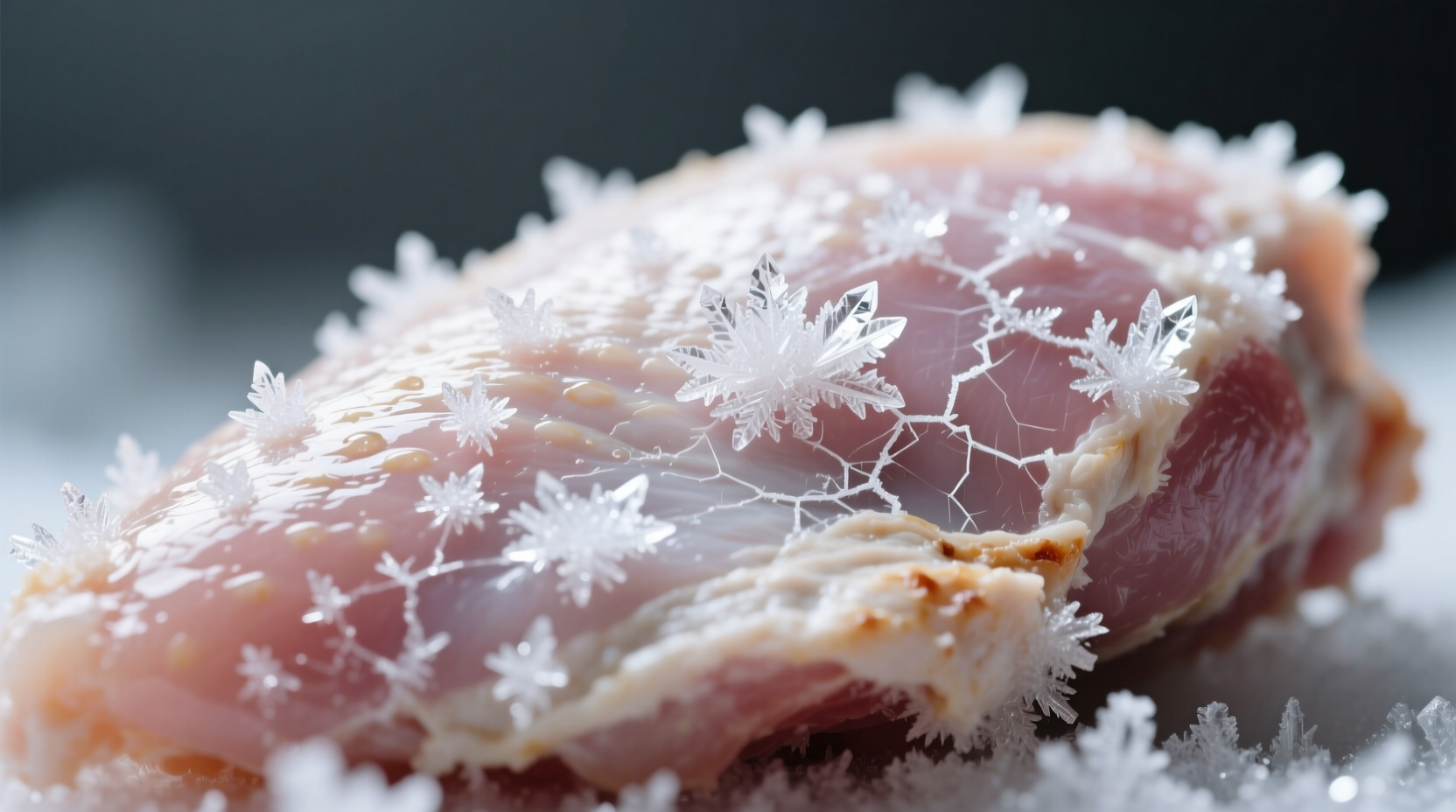Ever opened your freezer to discover mystery containers from months ago? You're not alone. Proper freezer storage prevents food waste while keeping your meals safe and tasty. This guide delivers science-backed timelines so you can confidently use every frozen item without compromising quality or safety.
Why Freezer Storage Timelines Matter
While freezing stops bacterial growth, it doesn't preserve food quality forever. Ice crystals form over time, causing freezer burn and texture changes. The USDA confirms that frozen food remains safe indefinitely at 0°F (-18°C), but optimal quality has expiration dates. Understanding these timelines helps you maximize both safety and taste.
Freezer Storage Time Reference Guide
Based on USDA Food Safety and Inspection Service guidelines, these timelines represent maximum periods for best quality. Always date packages when freezing.
| Food Category | Raw (Months) | Cooked (Months) | Critical Notes |
|---|---|---|---|
| Beef, Veal, Lamb | 6-12 | 2-3 | Ground meats: 3-4 months |
| Pork | 4-6 | 2-3 | Hams: 1-2 months for best texture |
| Poultry | 9-12 | 4 | Whole chicken: 1 year; parts: 9 months |
| Seafood | 3-6 | 3 | Fatty fish (salmon): 2-3 months; lean fish: 6 months |
| Vegetables | 8-12 | - | Blanch before freezing for best results |
| Fruits | 8-12 | - | Add lemon juice to prevent browning |
| Leftovers | - | 2-3 | Soups/stews: 4-6 months |
Source: USDA Food Safety and Inspection Service
Temperature Timeline: How Cold Affects Longevity
Freezer temperature directly impacts how long food maintains quality. This timeline shows the degradation process at standard home freezer temperatures:
- 0-3 months: Peak quality - minimal texture or flavor changes
- 3-6 months: Slight quality decline - minor ice crystals form
- 6-12 months: Noticeable freezer burn - texture becomes dry and leathery
- 12+ months: Significant quality loss - strong off-flavors develop
A 2023 study by the National Center for Home Food Preservation found that maintaining consistent 0°F (-18°C) temperatures extends quality retention by 30% compared to fluctuating temperatures. Their research confirms that even brief temperature spikes during power outages accelerate quality degradation.
Freezer Burn: What It Means for Your Food

Freezer burn appears as white, dry patches on frozen food caused by air exposure. While not dangerous to eat, it significantly impacts texture and flavor. The USDA explains that freezer burn occurs when moisture escapes from food, leaving dehydrated spots. You can cut away affected areas before cooking, but heavily burned items often lack desirable quality.
4 Critical Factors That Extend Freezer Life
Maximize your frozen food's shelf life with these science-backed techniques:
- Air-tight packaging: Use vacuum sealers or double-wrap in moisture-proof materials. Remove as much air as possible from containers.
- Consistent temperature: Keep freezer at 0°F (-18°C) or below. Use a standalone freezer thermometer for accuracy.
- Proper portioning: Freeze in meal-sized portions to avoid repeated thawing/refreezing.
- Strategic organization: Place older items at front using the "first in, first out" system.
When Frozen Food Becomes Unsafe
Though rare, frozen food can become unsafe in specific scenarios:
- Temperature abuse: If freezer rises above 40°F for more than 2 hours
- Cross-contamination: Raw meat juices contacting ready-to-eat foods
- Extended power outages: Discard food if outage exceeds 48 hours
The FDA recommends discarding any frozen food showing signs of spoilage after thawing, including unusual odors, slimy texture, or mold growth. Remember: freezing doesn't kill bacteria - it only pauses growth. Proper handling before freezing is crucial.
Smart Freezing Practices for Home Cooks
Implement these professional techniques to extend freezer life:
- Cool cooked foods completely before freezing to prevent ice crystal formation
- Label containers with contents and freezing date using waterproof markers
- Leave headspace in liquid containers for expansion during freezing
- Use freezer-safe containers - avoid thin plastic that becomes brittle
- Organize by food type and date for efficient meal planning
For optimal results, maintain your freezer at least half full to stabilize temperatures, but avoid overpacking which restricts cold air circulation. The University of Minnesota Extension confirms that properly packaged foods maintain quality significantly longer than those in suboptimal storage conditions.
Thawing Frozen Food Safely
How you thaw affects both safety and quality:
- Refrigerator thawing: Safest method (takes 24-48 hours)
- Cold water bath: Change water every 30 minutes (faster but requires attention)
- Microwave: Only for immediate cooking (can partially cook edges)
- Never thaw: At room temperature or in warm water
Once thawed, cook within 1-2 days for best results. Never refreeze thawed food unless it was thawed in the refrigerator and hasn't been sitting for more than 48 hours.











 浙公网安备
33010002000092号
浙公网安备
33010002000092号 浙B2-20120091-4
浙B2-20120091-4